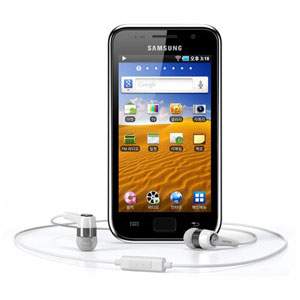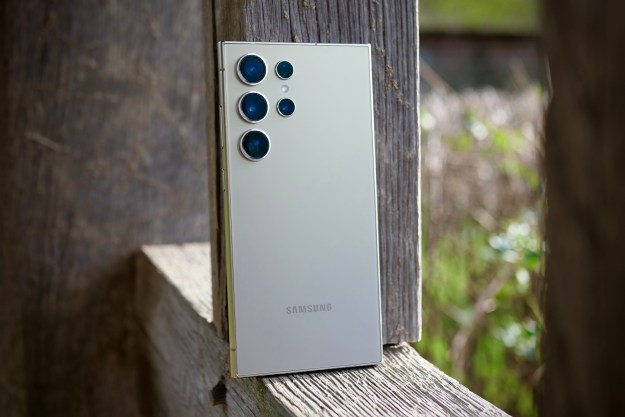 We haven’t heard anything about the Samsung Galaxy Player since CES, when we got a brief hands-on look and were saddened to hear to device was (at the time) meant for overseas markets only. But Samsung has announced that it will be unveiling the slim and stylish Android media player are making their way stateside.
We haven’t heard anything about the Samsung Galaxy Player since CES, when we got a brief hands-on look and were saddened to hear to device was (at the time) meant for overseas markets only. But Samsung has announced that it will be unveiling the slim and stylish Android media player are making their way stateside.
Today Samsung announced its new lineup and gave us a look at the new PMPs. Samsung will introduce 4- and 5-inch models, weighing five and seven ounces respectively. As we reported back at CES, the PMPs will feature Bluetooth 3.0 and Wi-Fi capabilities, front and rear cameras (the 5-inch model including flash), touchscreen, and (depending on model size) USB and mini SD ports. Of course, the devices comes with the ability to enable VoIP calling and Skype comes preinstalled (putting those dual cameras to work).
But what’s really noteworthy about the Galaxy Player is its OS. The device is the first portable media device running Android that isn’t a smartphone, and instead specifically devoted to digital content delivery. “Our Galaxy Family – including the Galaxy S mobile phones and Galaxy Tab – has been a success because we give people what they truly wish for – access to thousands of Android Apps coupled with Samsung’s sleep design,” says Samsung exec Tim Baxter. “Our new Galaxy Players deliver that same experience in two terrific, ultra-portable form factors – without incurring fees for a monthly data plan.”
Samsung has a few things in its favor with the Galaxy Player. For one thing, timing. The Zune has officially made its exit as a hardware competitor in the PMP arena and the iPod is ripe for a new rival. Secondly, it’s made what (from our limited hands-on time with it) seems to be a really good unit. It boasts an impressive display for multimedia purposes and supports AllShare for cloud-streaming between multiple cloud-based devices, which gives it a bit of a future-proof (more like future-prepared) edge. And it’s fast. Really fast: It runs the same processor that the Galaxy Tab does. We didn’t get a chance to try this feature out (they didn’t have it fully on display at CES), but its Drag N’ Play tool lets users drag content files from the PC directly to the player.
Last of all, it’s Android. It comes predisposed to a multitude of apps and both the 4- and 5-inch come with Froyo installed and according to Samsung “will be upgradeable to version 2.3 (Gingerbread).” But we all know Samsung isn’t the most reliable carrier when it comes to Android upgrades, so don’t get your hearts set on speedy new OS installs. That said, aligning itself with the popular Galaxy S Android branding is a smart marketing move, and draws parallels between itself and the iPod Touch and iPhone. The only caveat we can see existing is price: If the Galaxy Player costs more than the iPod Touch, it could be a barrier some consumers just can’t get their heads around.

- 4- and 5-inch LCD WVGA touchscreen displays
- 8GB and 16GB versions
- Android 2.2 (Froyo), upgradeable to 2.3 (Gingerbread)
- Wi-Fi and Bluetooth 3.0 enabled
- Cortex A8 1GHz processor
- MicroSD slot, accepts SD cards of up to 32GB
- Rear- and front-facing cameras; rear camera is 3.2 megapixels and front cameras is VGA
- Supports Adobe Flash 10.1
- Virtual 5.1 surround sound; SoundAlive technology
Editors' Recommendations
- A new version of the Samsung Galaxy S24 could be coming soon
- Best Samsung Galaxy S22 deals: Save big on unlocked models
- Samsung Galaxy S24 Ultra vs. iPhone 15 Pro Max: Which one is best?
- Don’t buy a Galaxy S24 Ultra or iPhone 15 Pro Max. Do this instead
- I’m a lifelong iPhone user. Here’s what I think about the Samsung Galaxy S24


